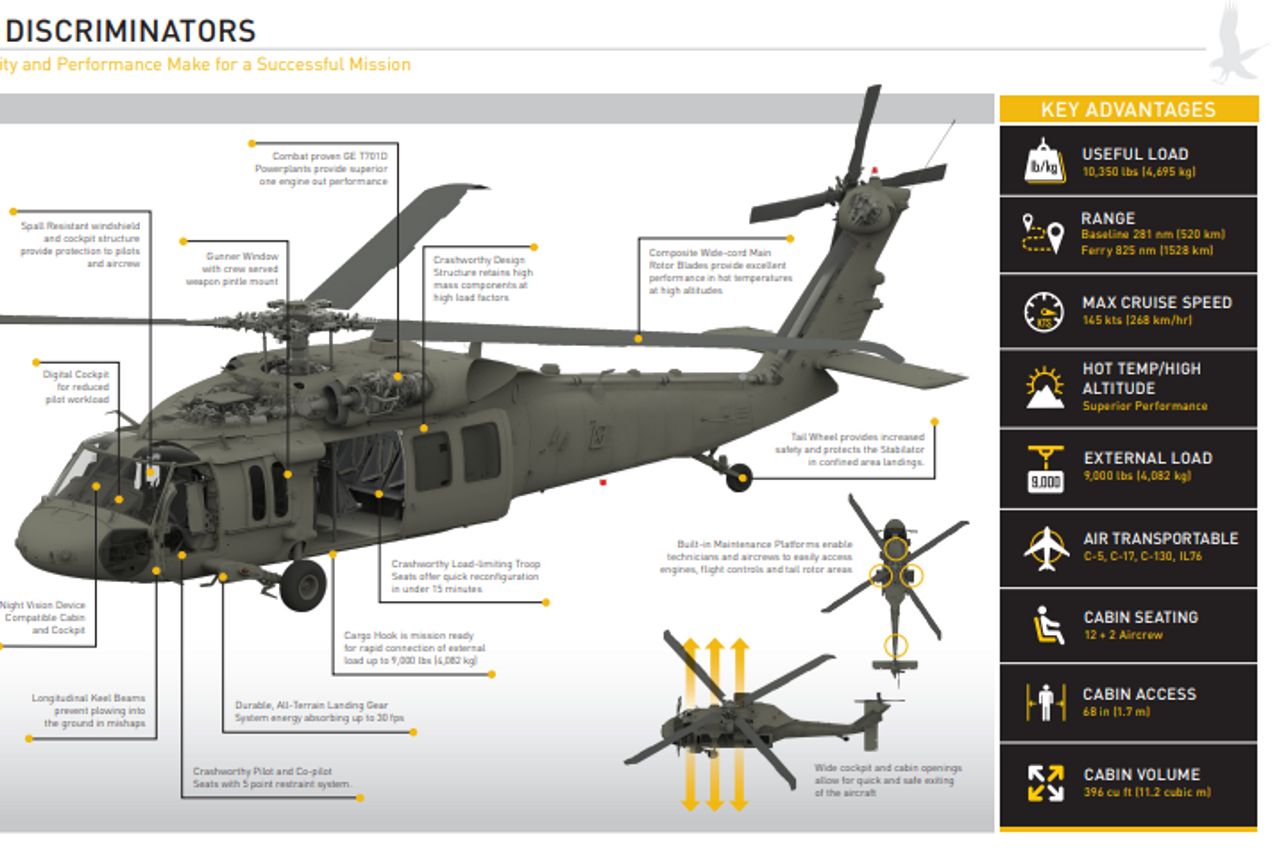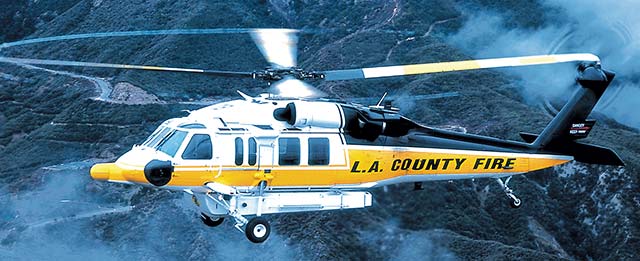Inside the Sikorsky S 70: What Establishes This Helicopter Apart from Its Competitors
Inside the Sikorsky S 70: What Establishes This Helicopter Apart from Its Competitors
Blog Article
High-Performance Multi-Role Rotorcraft Featuring Advanced Cabin Technologies and Integrated Sensor Solutions
The world of rotorcraft technology has seen noteworthy innovations in recent times, especially in the realm of high-performance multi-role rotorcraft furnished with sophisticated cockpit technologies and seamlessly integrated sensor systems. These developments have not only augmented the functional capacities of rotorcraft but have actually likewise substantially influenced modern-day air travel operations on numerous fronts. From boosted mission flexibility to boosted operational effectiveness, the convergence of innovative cockpit innovations and incorporated sensor systems has introduced a brand-new period of possibilities for rotorcraft applications. In the following conversation, we will discover the advancement of rotorcraft innovation, delve right into the world of sophisticated cabin technologies, and analyze the implications of incorporated sensor systems on the functional versatility and effectiveness of contemporary rotorcraft.
Advancement of Rotorcraft Innovation
The evolution of rotorcraft modern technology has been noted by significant innovations in aerodynamics, products, and propulsion systems, forming the capabilities and efficiency of modern rotorcraft. Furthermore, improvements in propulsion systems, consisting of a lot more powerful engines and innovative propulsion innovations, have allowed rotorcraft to attain greater elevations, faster rates, and higher payloads.
These improvements have not just transformed the abilities of rotorcraft however have additionally increased their applications throughout numerous industries, including armed forces, industrial, and emergency solutions. The continual evolution of rotorcraft innovation remains to drive development in the field, pressing the boundaries of what is possible and shaping the future of vertical flight.
Advanced Cabin Innovations
Building upon the foundational advancements in aerodynamics, materials, and propulsion systems, the realm of rotorcraft technology currently moves emphasis towards pioneering Advanced Cabin Innovations. The integration of innovative technologies within the cabin atmosphere plays an essential role in enhancing the functional capacities, safety, and efficiency of contemporary rotorcraft. sikorsky s 70. Advanced Cabin Innovations include a vast array of features created to provide pilots with enhanced situational understanding, structured data administration, and instinctive control user interfaces
Among the essential innovations in cockpit layout is the implementation of glass cockpits, which change standard analog determines with high-resolution display screens. These digital systems provide personalized layouts, real-time information combination, and boosted readability, allowing pilots to accessibility critical details at a look. Furthermore, advanced avionics systems, such as fly-by-wire controls and augmented fact display screens, are reinventing how pilots connect with the aircraft, permitting for accurate control and improved decision-making abilities.


Including sophisticated cockpit developments not just enhances pilot efficiency yet additionally adds to total goal performance and safety in complex operational atmospheres. By leveraging modern technologies within the cabin, rotorcraft manufacturers are establishing brand-new standards for operational quality and goal success.
Integrated Sensor Equipments
With the development of rotorcraft technology, the integration of innovative Integrated Sensing unit Solution has actually become vital in enhancing operational efficiency and safety. These Integrated Sensing unit Solutions encompass a large array of modern technologies that provide critical information for different functions such as navigation, security, targeting, and environmental monitoring. By seamlessly incorporating sensors like radars, cams, lidar, and infrared systems into rotorcraft, drivers can profit from improved situational awareness, improved objective capabilities, and decreased pilot work.
One key advantage of Integrated Sensor Systems is their capability to gather real-time information and provide actionable understandings to pilots and mission drivers. As an example, advanced radar systems can find and track targets over cross countries, permitting early danger detection and reliable response preparation. Additionally, incorporating electro-optical and infrared cams makes it possible for rotorcraft to carry out reconnaissance and surveillance objectives with accuracy and accuracy.
Basically, the integration of innovative sensor technologies into rotorcraft not only enhances functional performance however likewise adds substantially to general objective success and staff safety and security. As rotorcraft remain to progress, the function of Integrated Sensing unit Systems will definitely stay at the center of innovation in the aerospace market.
Operational Adaptability and Performance
Enhancing operational flexibility and performance in rotorcraft is an all-natural progression from the combination of advanced Integrated Sensor Systems. By leveraging why not try this out the insights and information supplied by these innovative sensing unit systems, rotorcraft can optimize their efficiency across different goals and atmospheres.
Functional convenience includes the capability of rotorcraft to adjust to different duties and circumstances effectively. With advanced cockpit modern technologies and integrated sensor systems, rotorcraft can perfectly transition between tasks such as search and rescue, clinical evacuation, security, and much more. This adaptability boosts the rotorcraft's capacity to meet diverse operational needs without requiring substantial reconfiguration.
Efficiency in rotorcraft operations is important for optimizing goal performance and resource application. Integrated sensor systems play a critical role in boosting functional effectiveness by offering real-time information on weather, terrain mapping, target tracking, and a lot more. This data allows pilots to make informed choices quickly, enhance trip courses, conserve gas, and improve overall mission performance.
Effect On Modern Aviation Workflow

Moreover, the integration of sophisticated sensors assists in improved objective planning and implementation, enabling rotorcraft to do a vast variety of jobs with boosted accuracy. From search and rescue operations to aerial firefighting and police objectives, the abilities of contemporary rotorcraft equipped with advanced cabin technologies and incorporated sensing unit systems are unparalleled.
Moreover, the impact of these innovations extends past operational effectiveness to cost-effectiveness and sustainability. By maximizing trip routes, fuel consumption, and maintenance routines, high-performance rotorcraft geared up with sophisticated cabin innovations and sensing units contribute to minimizing functional expenses and environmental effect, making them important possessions in modern-day aeronautics procedures.
Conclusion
To conclude, the high-performance multi-role rotorcraft with innovative cockpit technologies and integrated sensing unit systems represents a significant advancement in aeronautics innovation. These advancements enhance functional flexibility and performance, eventually affecting modern air travel procedures in a positive means. The integration of these advanced innovations enables enhanced abilities and efficiency in different goal circumstances, showcasing the proceeded improvement of rotorcraft technology in the air travel market.
The realm of rotorcraft technology has seen remarkable advancements in current times, specifically in the realm of high-performance multi-role rotorcraft geared up with sophisticated cabin innovations and perfectly integrated sensing unit systems. From improved mission convenience to boosted functional performance, the convergence of innovative cabin innovations and incorporated sensor systems has ushered in a new era of opportunities for rotorcraft applications. In the complying with discussion, we will certainly check out the evolution of rotorcraft modern technology, delve right into the Read More Here world of advanced cabin advancements, and examine the ramifications of incorporated sensing unit systems on the functional adaptability and performance of modern-day rotorcraft.

Report this page